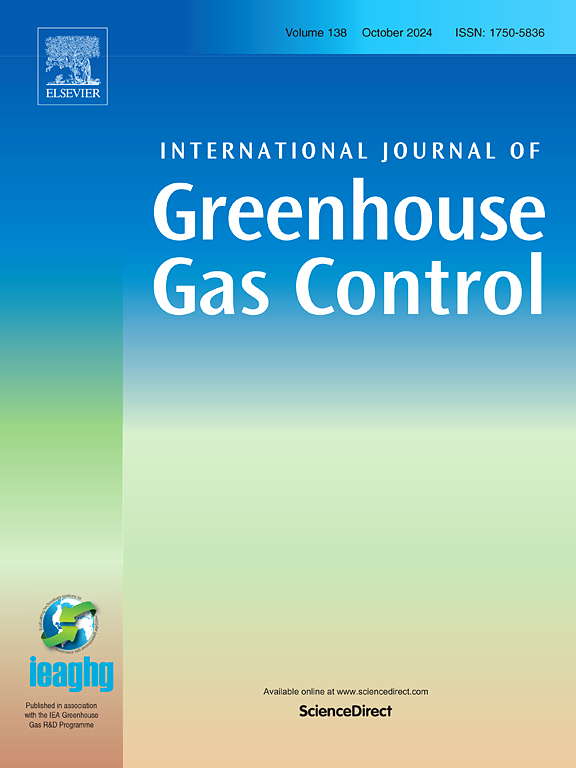The role of impurities in CCS from pilot capture plants to sequestration sites—A review
IF 5.2
3区 工程技术
Q2 ENERGY & FUELS
International Journal of Greenhouse Gas Control
Pub Date : 2025-05-27
DOI:10.1016/j.ijggc.2025.104410
引用次数: 0
Abstract
We investigate the presence and effects of impurities in the carbon capture, transportation and sequestration (CCS) technology chain. We start from the composition of flue gases and investigate the subsequent treatment methods, the technical and operating characteristics of solvent-based CO2 capture pilot plants, the compositions of the absorber and desorber outlet streams and the CO2 stream specifications for downstream compression, transportation and storage processes. We present public data from 40 campaigns in large capture pilot plants and 20 sets of specifications for CO2 transportation and underground storage from national agencies, companies and projects worldwide. We identify and categorize the impurities depending on the flue gas source and the solvent type. The most commonly identified emissions in the treated gas are ammonia (NH3) and the solvent used in each plant. Monoethanolamine (MEA) emissions are higher compared to those of the other amine solvents. Sulfur and nitrogen oxides (SOx, NOx) are the most investigated impurities, whereas oxalate and formate are the most reported degradation products. Regardless of the solvent used, NOx, NH3 and aldehydes are reported in the CO2 gas product stream of most campaigns. The specifications for transportation and sequestration have similarities, with those of Northern Lights being stricter.
从中试捕集厂到封存点,杂质在CCS中的作用综述
我们研究了碳捕获、运输和封存(CCS)技术链中杂质的存在和影响。我们从烟气的组成开始,研究后续处理方法、溶剂型二氧化碳捕集中试工厂的技术和操作特性、吸收器和解吸器出口流的组成以及下游压缩、运输和储存过程的二氧化碳流规格。我们提供了来自40个大型捕集试点工厂的公开数据,以及来自世界各地国家机构、公司和项目的20套二氧化碳运输和地下储存规范。我们根据烟气来源和溶剂类型对杂质进行识别和分类。处理后的气体中最常见的排放物是氨(NH3)和每个工厂使用的溶剂。与其他胺溶剂相比,单乙醇胺(MEA)的排放量更高。硫氧化物和氮氧化物(SOx, NOx)是研究最多的杂质,而草酸盐和甲酸盐是报道最多的降解产物。无论使用何种溶剂,在大多数活动的CO2气体产物流中都有NOx, NH3和醛类的报道。运输和封存的规范有相似之处,北极光的规范更严格。
本文章由计算机程序翻译,如有差异,请以英文原文为准。
求助全文
约1分钟内获得全文
求助全文
来源期刊
CiteScore
9.20
自引率
10.30%
发文量
199
审稿时长
4.8 months
期刊介绍:
The International Journal of Greenhouse Gas Control is a peer reviewed journal focusing on scientific and engineering developments in greenhouse gas control through capture and storage at large stationary emitters in the power sector and in other major resource, manufacturing and production industries. The Journal covers all greenhouse gas emissions within the power and industrial sectors, and comprises both technical and non-technical related literature in one volume. Original research, review and comments papers are included.

 求助内容:
求助内容: 应助结果提醒方式:
应助结果提醒方式:


